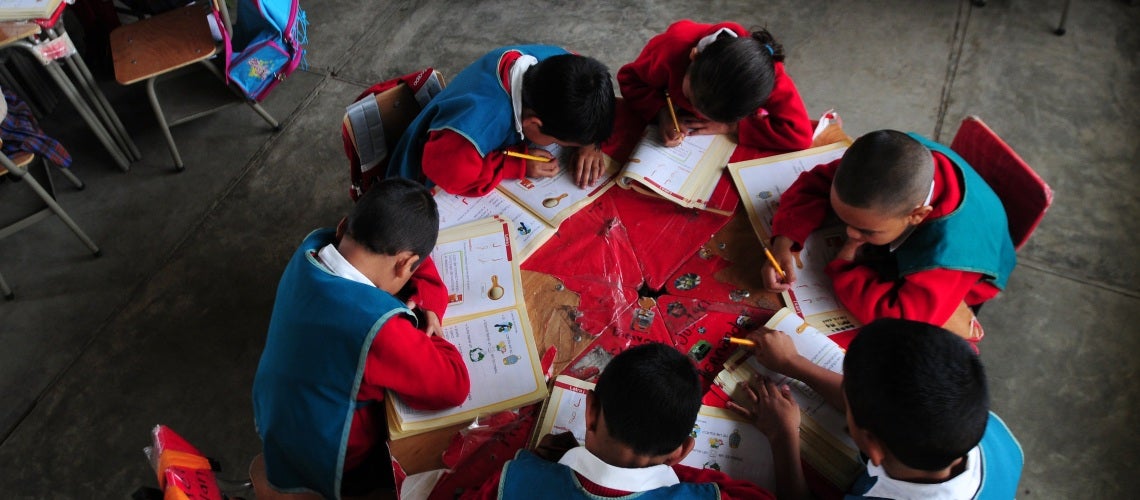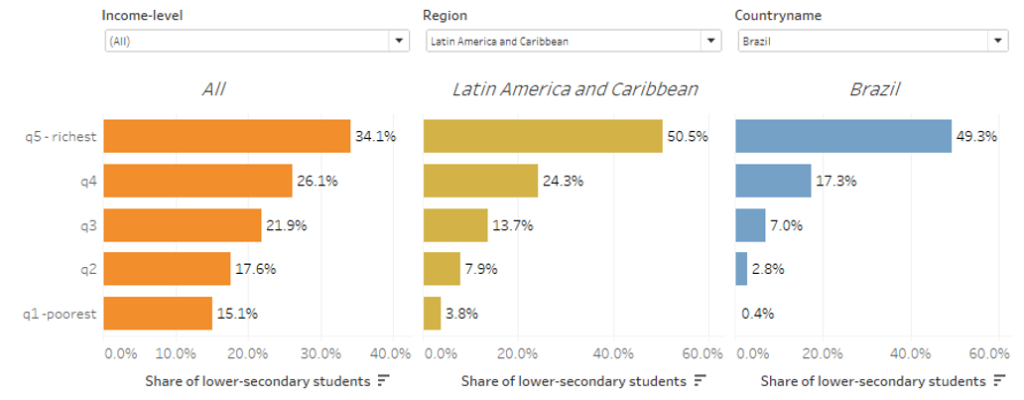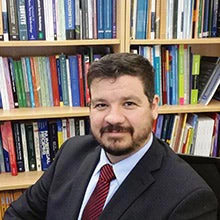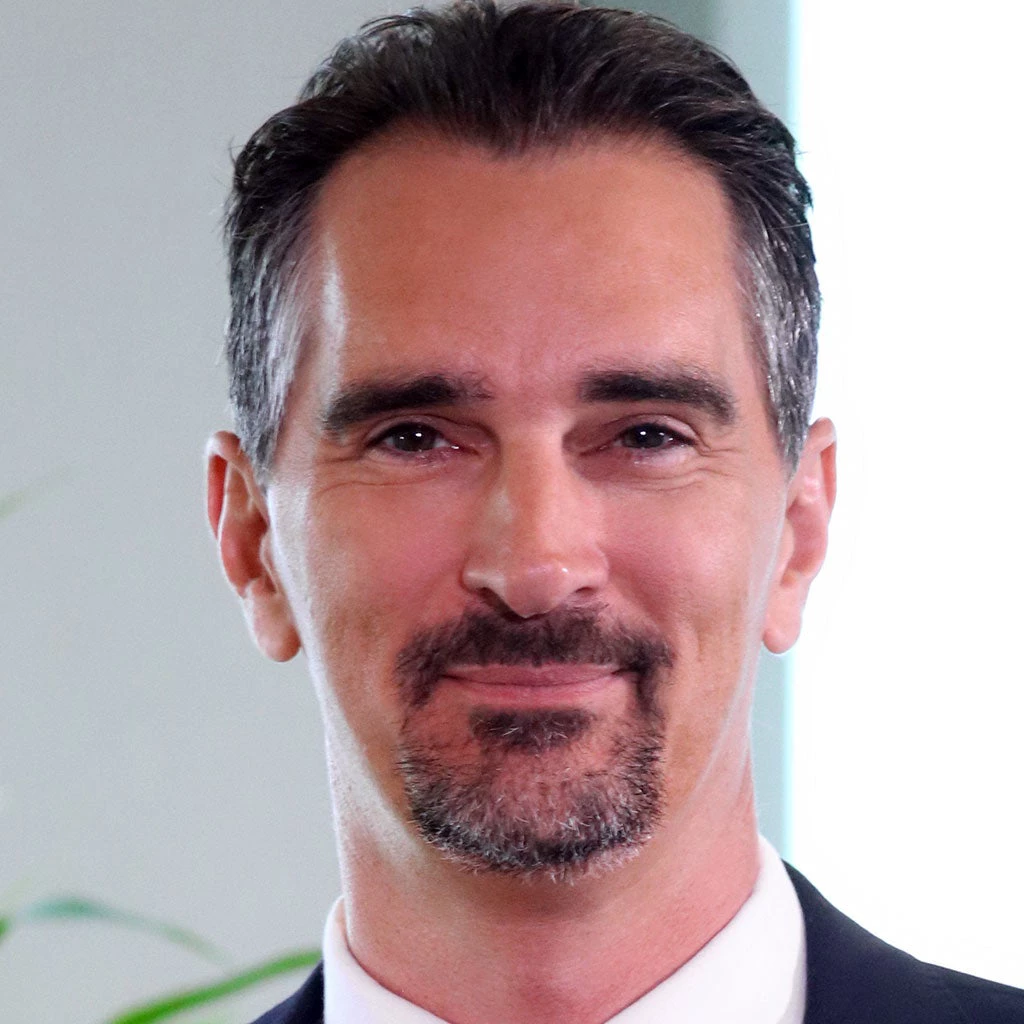 Children’s learning plummeted during the COVID-19 pandemic, particularly in Latin America. Copyright: Maria Fleischmann/World Bank.
Children’s learning plummeted during the COVID-19 pandemic, particularly in Latin America. Copyright: Maria Fleischmann/World Bank.
There is now overwhelming evidence that children’s learning plummeted during the COVID-19 pandemic, particularly in Latin America. Surprisingly, we found that there has been little public outcry in the region for school systems to act on learning recovery compared to the rest of the world.
Recently, one of us (Gabriel) spoke with his daughter’s 5th grade instructor at a local private school outside Bogota, Colombia. Teachers had been optimistic about learning during the pandemic because most students seemed engaged online. But the shocking reality of learning losses became apparent once students were back in classrooms. This is a “best-case” scenario at a well-resourced school, with all the ingredients to make distance learning at least partially effective: high-speed internet, laptops, educated parents, and a well-resourced school.
For many others, distance education meant little or no learning. Children in Latin America and the Caribbean have felt these costs most acutely, where they experienced some of the longest and uninterrupted COVID-19 school closures in the world. On average, students in the region missed one and a half years of learning, with most returning to classrooms in 2022.
Measuring media attention
We measured attention given to learning losses and school closures in 18 countries using Media Cloud. Media Cloud gathers the full universe of online news sources, which allows us to look at frequency of topic mentions between January 2020 to December 2021 (the reader can explore other periods below), using the terms: “learning loss,” “remote learning,” and “school closure.” We also benchmark the results with “unemployment” and “vaccine.” We interpret the share of mentions of a term to indicate the intensity of public interest in the topic.
Countries in Latin America have less learning-related media attention compared to the benchmark terms. The share of stories mentioning unemployment or vaccine are similar across countries. School closure was referred to in 0.3% of articles in Latin America, 2.3% in Canada and 3.1% in the United States. Gaps in mentions similarly occur for learning loss and remote learning. Nigeria and South Africa also have relatively more learning-related mentions, so this is not simply a story of country incomes.
Figure 1: Media attention to selected education and health topics during the pandemic for selected countries and regions

Are people less concerned with learning losses in Latin America?
We interpret these patterns as indicating that school closures and learning losses have generated less public concern in Latin America, at least among media outlets and their readers. Why would that be?
Private school enrollment in Latin America among highest in the world and concentrated among the wealthy: 50% of children in the richest quintile are likely to attend a private lower secondary school, compared to 4% among the poorest. Most of the elite and media readership likely send their children to private schools, who were more satisfied with remote learning and experienced shorter school closures. This is one possibility for low coverage of learning losses.
Figure 2: % Private School Enrollment by Wealth Quintile (PISA 2018)

A second possibility is that the lack of coverage reflects lower concern in education among Latin American societies, either because families are satisfied with existing resources; or they are not fully aware of the learning crisis’s magnitude. This would match the general observation that Latin Americans express satisfaction with their education systems despite poor performance.
Globally, we observe that satisfaction with the education sector has some correlation with an objective measure of its quality: the share of children who can read with understanding an age-appropriate text (measured by the Learning Poverty indicator). However, this pattern does not hold in Latin American countries. Countries with the highest learning poverty levels in the region, such as Nicaragua, Dominican Republic, and Guatemala, also have the highest satisfaction with the educational system. Chile, with lowest levels of learning poverty in the region, is also least satisfied with the existing educational system.
Correlation is not causation. For example, education systems can be better because parents have higher expectations for learning results. However, low learning may be an invisible problem to many parents. Even if parents are aware, access to schools already hugely benefits their children.
Figure 3: Correlation between adult population satisfaction with the education system in their country, and Learning Poverty
Acknowledging the learning crisis
The combination of what we believe is a lack of public concern for learning losses, and satisfaction with education systems (especially in places with high learning poverty), threatens a dangerous outcome for the COVID generation of students in Latin America. Countries and families – are not discussing learning losses enough in places with lowest pre-pandemic learning levels, which can leave their children further behind.
There is growing alignment that learning recovery and acceleration must start with sustained political commitment, along with public support. This first requires acknowledging the extent of the learning crisis, deepened by learning losses. Interest in school closures and remote learning have declined overtime, while attention to learning losses spiked mid-2022. Unfortunately, interest waned again shortly after.
Figure 4: Media attention over-time in Latin America and the Caribbean
In Latin America, the presidents of Argentina, Chile, Ecuador, and Honduras have expressed commitments to education recovery and acceleration, but governments across the globe have yet to do the same. Recovering learning losses also requires efforts from educators, families, and administrators throughout the system. If education systems return to normal without a shared commitment to recovery, students today will face lifelong consequences.






Join the Conversation